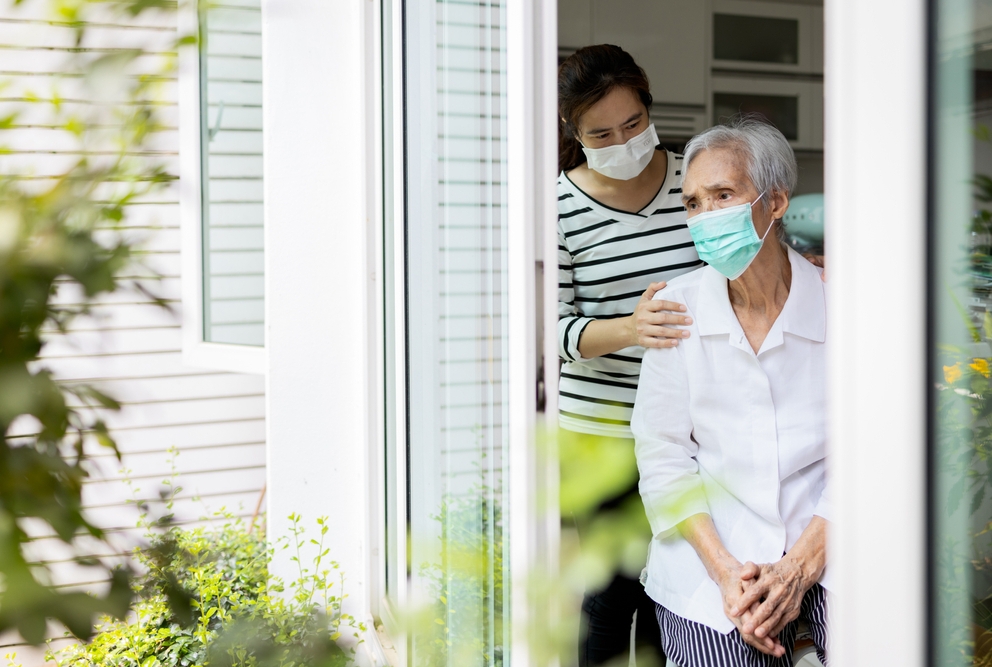
Home health care workers faced increased risks to their physical, mental and financial well-being while providing essential care to patients during the COVID-19 pandemic, according to researchers at Weill Cornell Medicine, Cornell Tech and Cornell University.
The study, published Aug. 4 in JAMA Internal Medicine, provides the first rigorous analysis of home health care workers’ experiences during the pandemic. The findings highlight the inequities faced by an already vulnerable and marginalized workforce and suggest that interventions and policies to protect them are urgently required.
“Despite facing unique challenges during the pandemic, home health care workers have not received the same attention as other front-line providers,” said lead author Dr. Madeline Sterling, an assistant professor of medicine at Weill Cornell Medicine and a member of the Cornell Center for Health Equity. “Increased awareness of their role and the challenges they face providing care is needed as more people across the United States cope at home with COVID-19 and need help from paid caregivers.”

Dr. Madeline Sterling
The investigators conducted a series of one-on-one interviews with 33 home health care workers in New York City at the height of the COVID-19 pandemic in March and April. They recruited participants from 24 different home care agencies across all five boroughs, in partnership with the 1199SEIU-Home Care Industry Education Fund, part of the largest healthcare union in the United States.
Among study respondents, 97 percent were women, averaging 48 years of age, with 11 years of experience in home health care. Sixty-four percent were Black, 18 percent were Hispanic and 67 percent had completed at least some college education.
Five main themes emerged from the participants’ answers. They worked on the front lines of healthcare and performed additional duties such as symptom monitoring, cleaning homes, running errands and providing emotional support, yet felt invisible to society at large. They reported a heightened risk of getting sick with or transmitting COVID-19, because many relied on public transportation and were typically caring for older adults living with multiple chronic conditions. Agencies provided varying amounts of information and training about COVID-19 and often adequate personal protective equipment (PPE), such as masks and gloves, was lacking. As a result, many participants relied on non-agency alternatives for support and purchased their own PPE and cleaning supplies to meet daily patient care needs. Finally, many were forced to make difficult trade-offs between working and putting their own health at risk or losing their wages and benefits.
The authors suggested several policies and changes to the industry. Designating home health care workers “essential” across the U.S., as they already are in New York, could help ensure safety and protect against financial hardships. Other suggested improvements included passing legislation to ensure PPE is available to home health care agencies, implementing guidelines for providing care during the COVID-19 pandemic systematically across all agencies, and assigning workers to patients on a geographic basis to minimize their need to use public transportation.

Dr. Nicola Dell
“We can do many things to improve day-to-day work for home health care workers, but having their value recognized by the broader system, patients and families, is a bigger challenge,” said senior author Dr. Nicola Dell, an assistant professor in the Jacobs Technion-Cornell Institute at Cornell Tech and also a member of the Cornell Center for Health Equity.
Dr. Sterling added that the researchers’ next steps are to conduct a quantitative study related to their findings among home health care workers and to conduct a qualitative study with other key stakeholders in home care to “try to understand the perspectives of home health care agencies, for example, which are probably also in a very difficult position.”
The study was supported in part by grants from the Robert Wood Johnson Foundation (76487) and the National Heart, Lung, and Blood Institute (K23HL150160).

